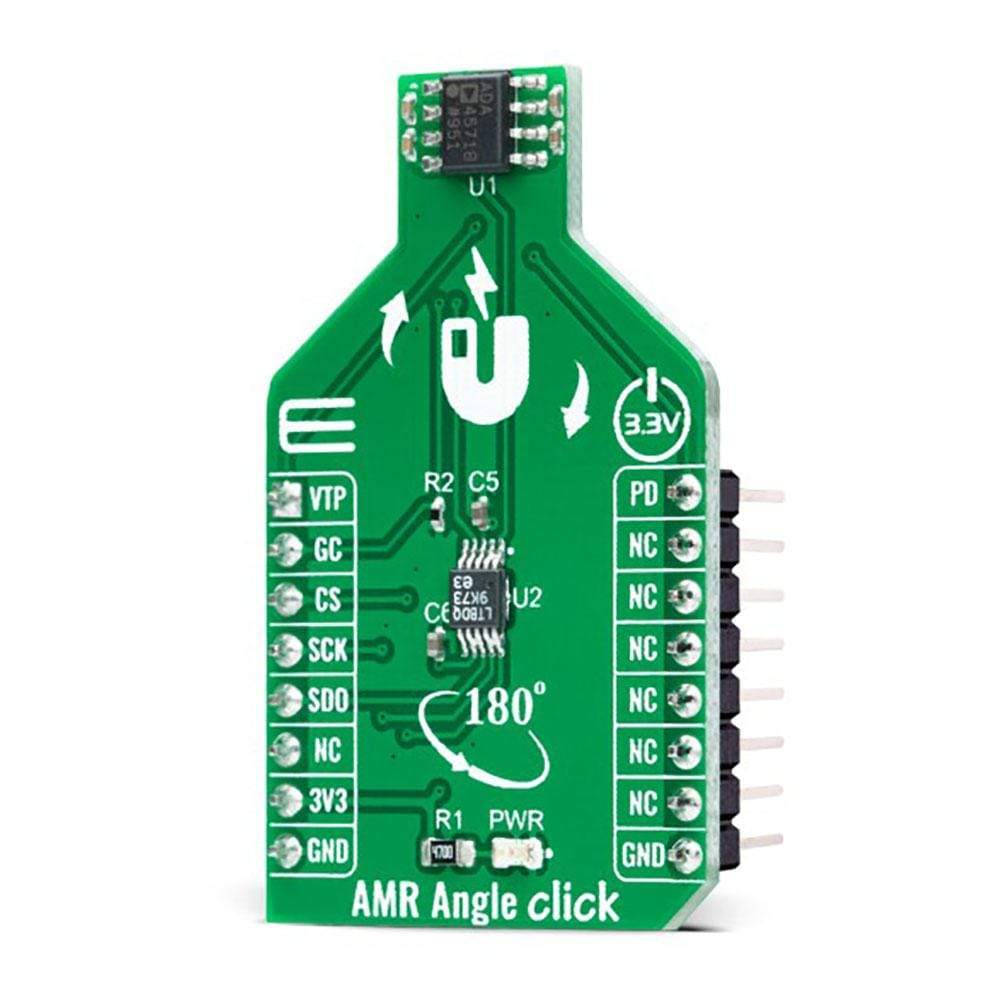
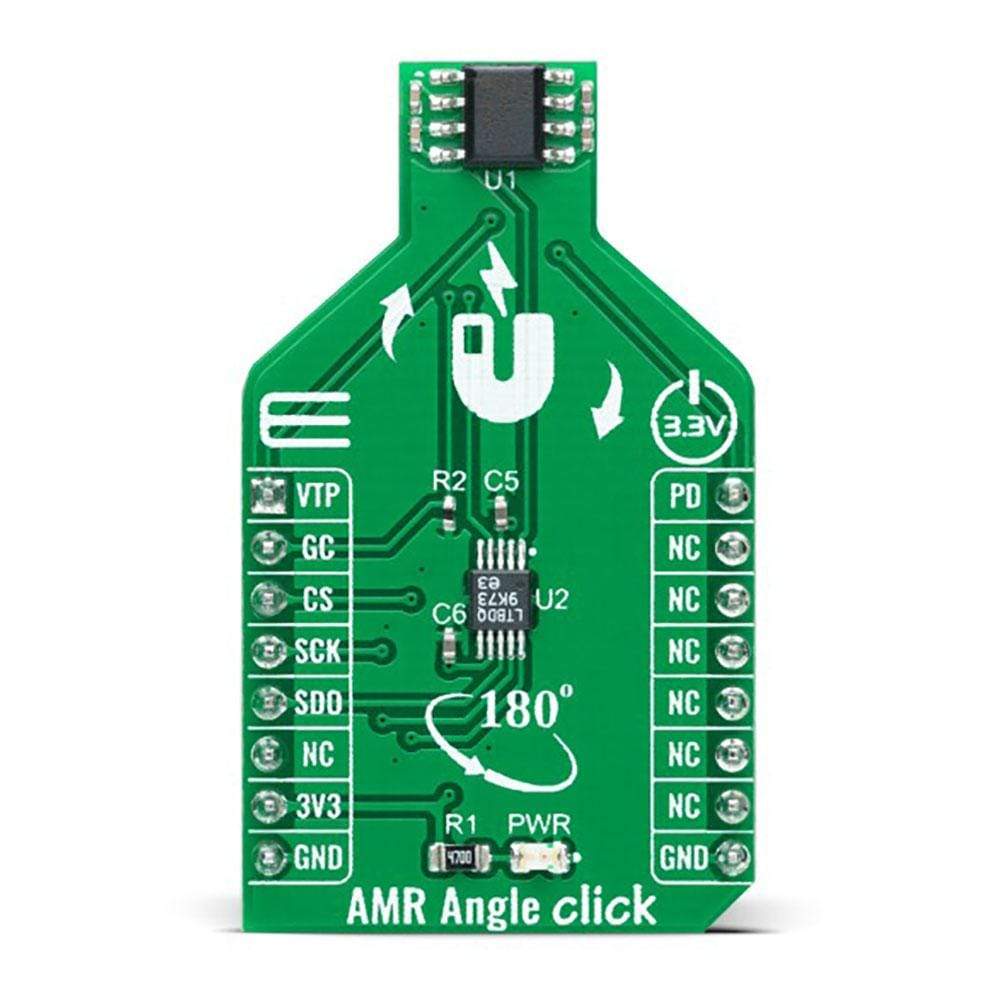
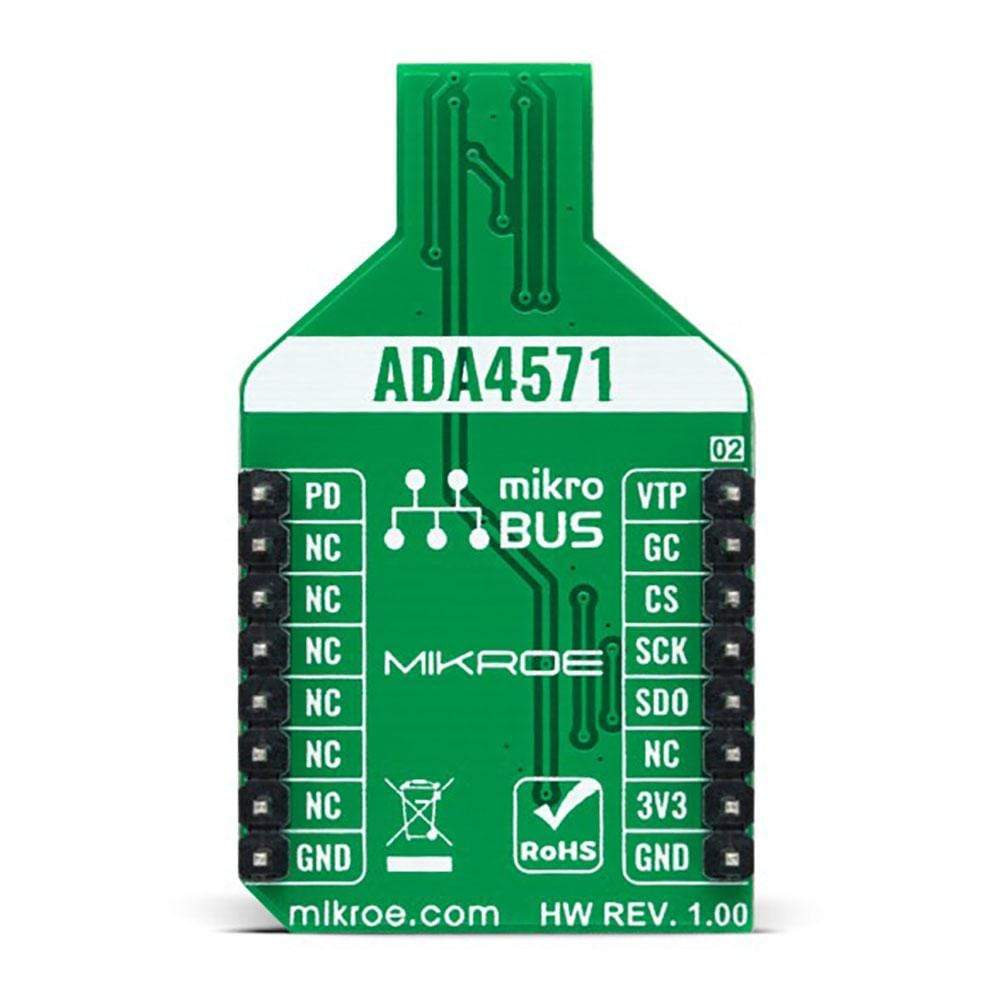

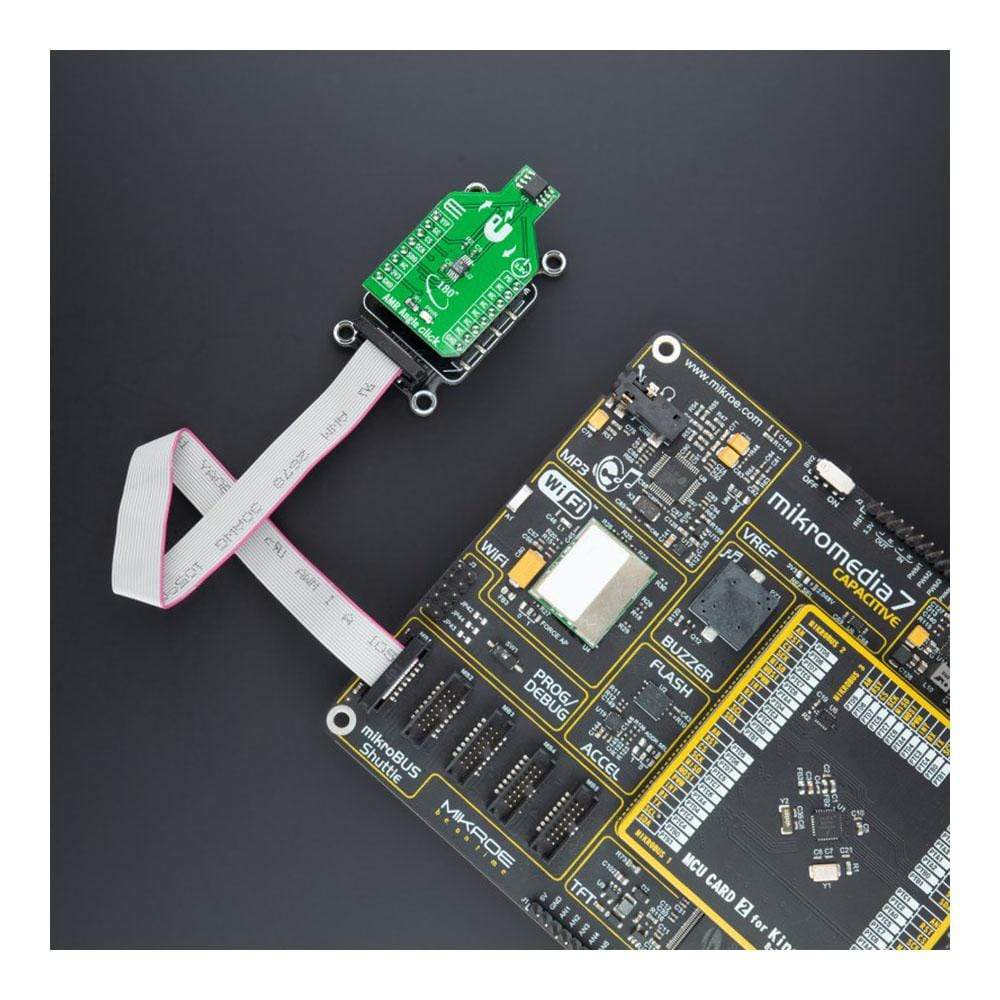
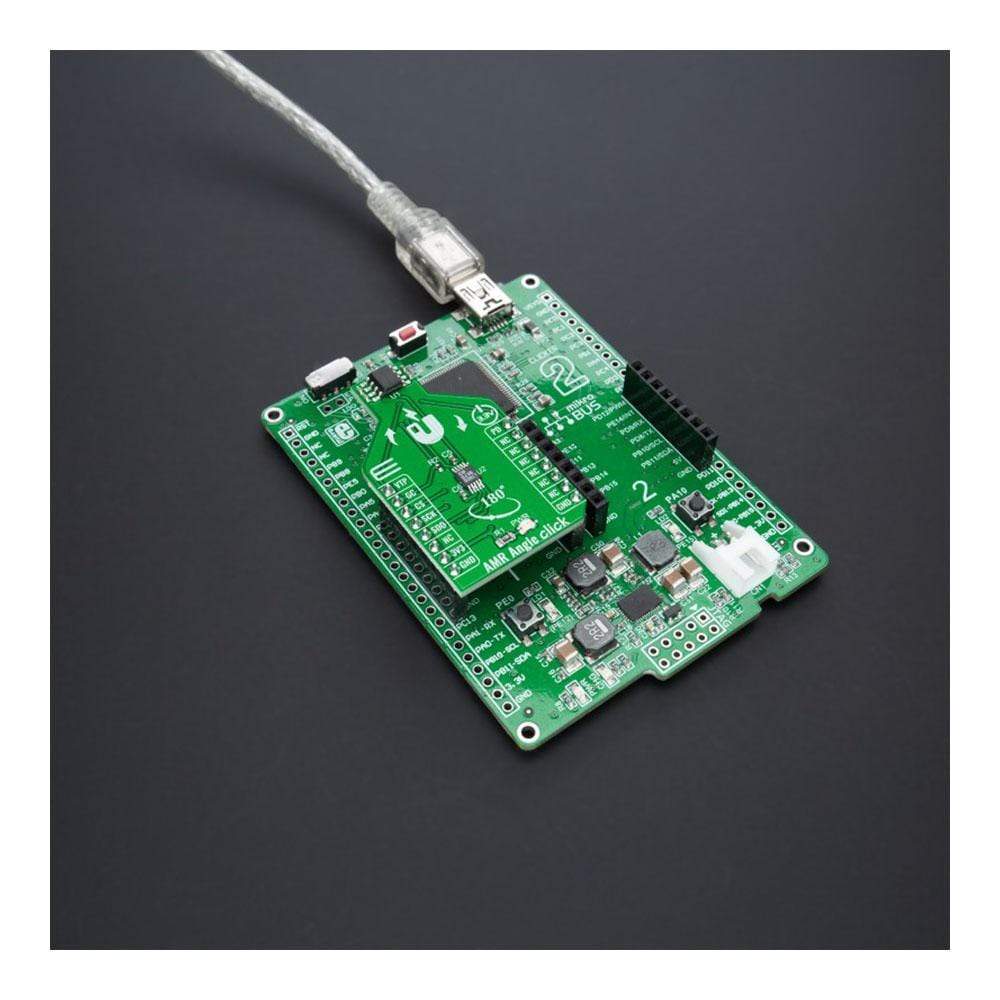
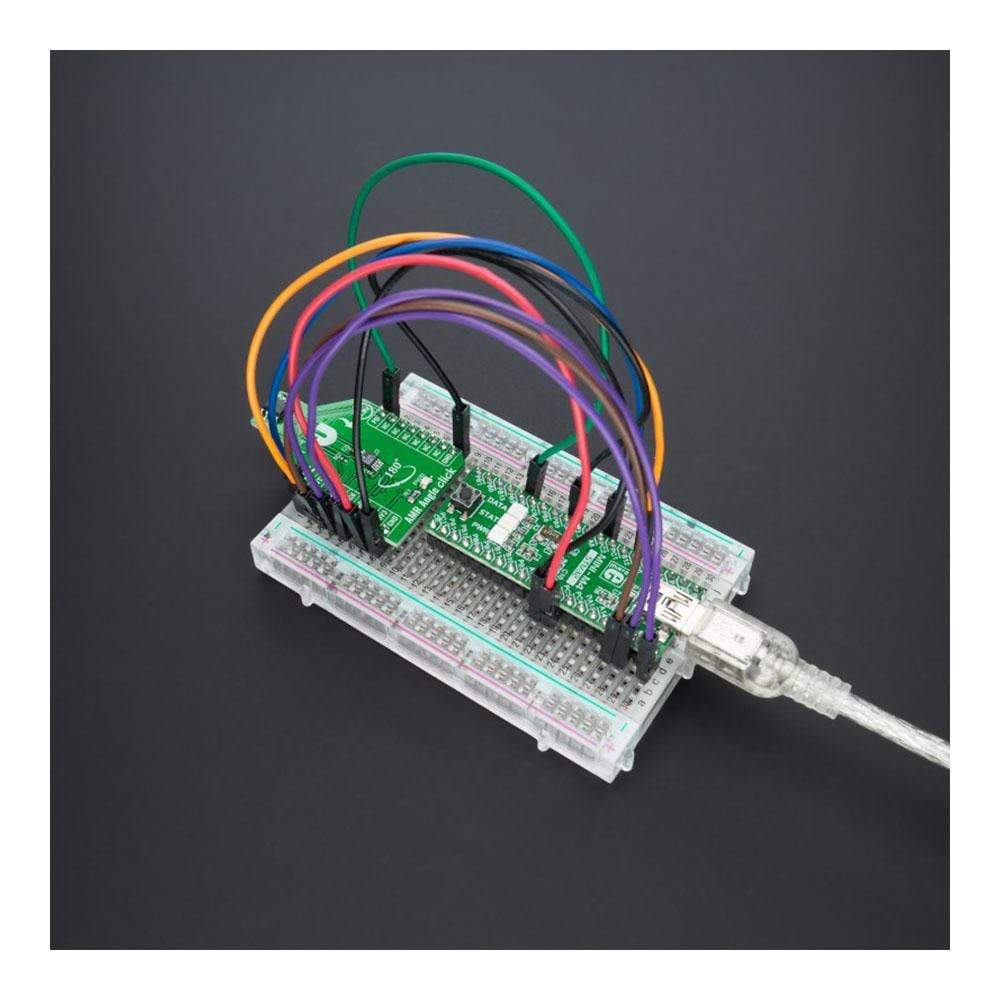
Overview
The AMR Angle Click Board™ is a compact add-on board containing an anisotropic magnetoresistive measurement solution ideal for either angle or linear position measurements. This board features the ADA4571, an AMR sensor with clean and amplified cosine and sine output signals related to a rotating magnetic field angle from Analog Devices. It can provide better than 0.2° angular accuracy over 180°, and linear accuracy of 2mil (0.002 inches) over a 0.5-inch range, depending on the size of the used magnet. This Click Board™ is suitable for absolute position measurement (linear and angle), contactless angular measurement and detection, magnetic angular position sensing, actuator control and positioning, and more.
The AMR Angle Click Boiard™ is supported by a mikroSDK compliant library, which includes functions that simplify software development. This Click Board™ comes as a fully tested product, ready to be used on a system equipped with the mikroBUS™ socket.
Downloads
Le AMR Angle Click Board™ est une carte complémentaire compacte contenant une solution de mesure magnétorésistive anisotrope idéale pour les mesures d'angle ou de position linéaire. Cette carte comprend l'ADA4571, un capteur AMR avec des signaux de sortie cosinus et sinus propres et amplifiés liés à un angle de champ magnétique rotatif d'Analog Devices. Il peut fournir une précision angulaire supérieure à 0,2° sur 180° et une précision linéaire de 2 mil (0,002 pouce) sur une plage de 0,5 pouce, selon la taille de l'aimant utilisé. Ce Click Board™ convient à la mesure de position absolue (linéaire et angulaire), à la mesure et à la détection angulaires sans contact, à la détection de position angulaire magnétique, au contrôle et au positionnement d'actionneurs, etc.
Le AMR Angle Click Boiard™ est pris en charge par une bibliothèque compatible mikroSDK, qui comprend des fonctions qui simplifient le développement logiciel. Cette Click Board™ est un produit entièrement testé, prêt à être utilisé sur un système équipé du socket mikroBUS™.
| General Information | |
|---|---|
Part Number (SKU) |
MIKROE-4561
|
Manufacturer |
|
| Physical and Mechanical | |
Weight |
0.017 kg
|
| Other | |
Country of Origin |
|
HS Code Customs Tariff code
|
|
EAN |
8606027382185
|
Warranty |
|
Frequently Asked Questions
Have a Question?
Be the first to ask a question about this.







